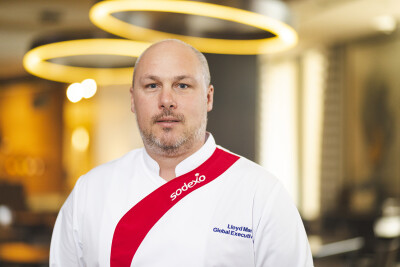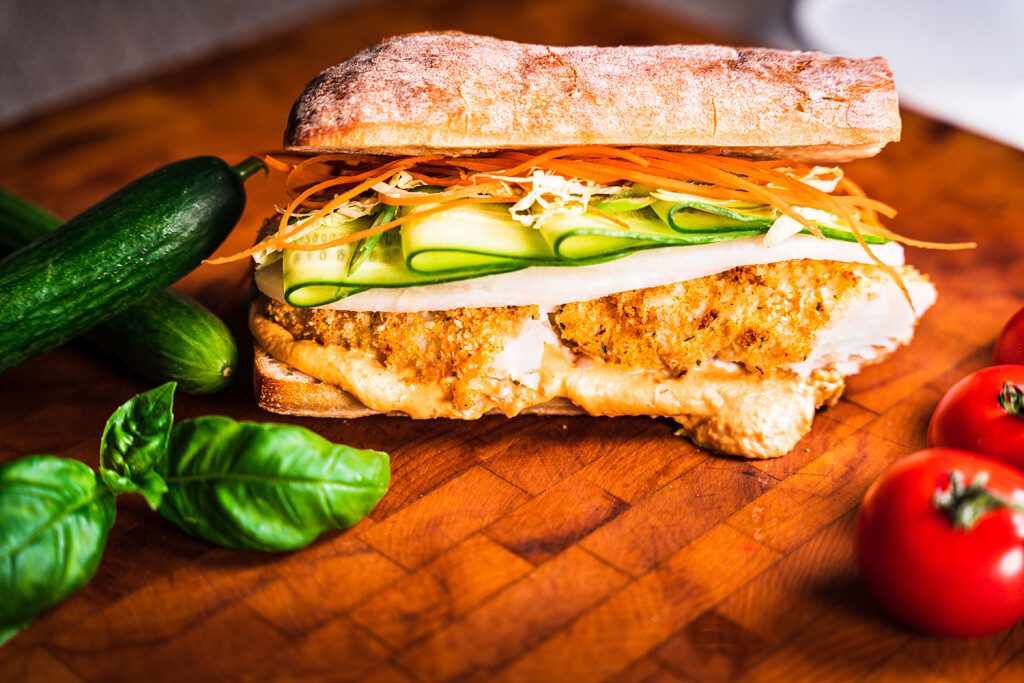On the quaint — and unbridged — tidal island of Mersea, about an hour northeast of London, Chef Lloyd Mann lives among the local oyster fishermen. The Blackwater Estuary, where oysters are believed to have been harvested for more than a thousand years, is just across from Mersea Island. This marshy coastline along County Essex provides daily inspiration for Mann, who’s been a chef for more than 28 years.
Mann serves as the Global Executive Chef and vice president of Culinary for Sodexo, the worldwide food services company present in 67 countries. He’s seen the impact of human actions on the oceans, both in his community and his career. He’s also played a vital role in supporting a sustainable seafood policy for Sodexo and its chefs in 30,000 locations, working to implement responsible sourcing guidelines to protect important fish populations.
Mann believes Sodexo must lead with a bold vision and embrace sustainable practices in all of its kitchens to be good stewards of the ocean’s bounty. He recently talked with us about Sodexo’s commitment to sourcing responsibly.

What does responsible sourcing mean to Sodexo?
We recognize that responsible seafood sourcing has both environmental and social implications, and it’s important that we find transparency in our seafood supply chain.
Sodexo has committed to sourcing 100 percent sustainable seafood by 2025, and we’re currently at 77.7 percent of our goal.
We’ve been working with our suppliers to source increasingly from responsibly managed fisheries and seafood farms, and collaboration and partnerships have been instrumental.
Which partners are helping you progress toward your goal?
We’ve partnered with numerous organizations to help us shape our vision and develop guidelines. The Global Sustainable Seafood Initiative, a partnership with more than 90 industry stakeholders, provides global benchmarking tools for the seafood certifications we recognize. With Sodexo’s Future Food Collective, we’ve brought together experts in the food industry to carry out research and work with our chefs on sustainable seafood, and health and wellness initiatives.
How do you drive awareness of sustainable seafood with your teams?
Our chefs and culinary teams take the lead in the sustainable seafood space to attract guests to our restaurants. To help them make the best choices for responsible sourcing of the fish and seafood assortments we serve to our guests, our supply management team put together a comprehensive Sustainable Seafood Sourcing Guide.
The guide features a simple red, amber, and green rating that makes it easy to identify which species we should be buying and using in our menus to best protect our oceans.
The guide homes in on species “not at risk,” as well as species that are sustainably managed, to inform our development chefs who are creating dishes and menus.
How are you influencing consumer behavior on the topic of sustainable seafood?
Consumers have the power to positively effect change in the industry. Our insights show that they want to know where the food they eat is sourced, and they want to be sure it’s been sourced responsibly.
With our restaurant guests responding favorably to messages of sustainability, we’re able to offer a wide range of sustainably sourced seafood and broaden the species we feature — and we’ve set a target to have fish and seafood comprise 10 percent of the dishes on our menus.
What’s next for Sodexo with sustainable seafood?
This fall, we’re launching global Love of Seafood campaigns to celebrate sustainable fish and seafood. Our messaging will help our restaurant guests learn more about sustainable seafood, its benefits for the environment, and the overall health and nutrition benefits it offers.
As part of this months-long effort, our chefs are creating new ways to feature fish and seafood as a delicious choice in our cafés. These campaigns feature stunning food photography and visuals to entice our guests to try new fish and seafood dishes, and we’re highlighting regional and local species in our restaurants whenever possible as part of our educational efforts.







